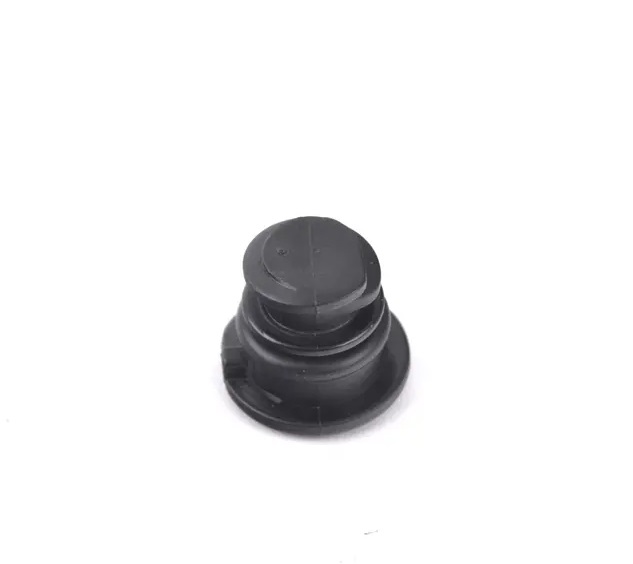Understanding the Function and Importance of Crank Pulley Oil Seals in Engine Performance
Understanding the Importance of Crank Pulley Oil Seal
The crank pulley oil seal is a critical component in the engine assembly of a vehicle. It plays a significant role in maintaining the integrity of the engine’s lubrication system and ensuring optimal performance. Despite its small size, the crank pulley oil seal serves various crucial functions that contribute to the overall efficiency and longevity of the engine.
What is the Crank Pulley Oil Seal?
The crank pulley oil seal is located at the front of the engine, sealing the crankshaft and the crank pulley. Its primary function is to prevent engine oil from leaking out of the engine while also keeping dirt and contaminants from entering. The seal is typically made from durable materials like rubber or silicone, which can withstand the high temperatures and pressures generated within the engine.
Functions of the Crank Pulley Oil Seal
1. Prevention of Oil Leakage One of the main functions of the crank pulley oil seal is to keep the engine oil contained within the crankcase. Oil leakage can lead to a decrease in lubrication, resulting in increased wear and tear on engine components, potential overheating, and ultimately severe engine damage.
2. Protection Against Contaminants The oil seal also acts as a barrier against dirt, dust, and other contaminants that could enter the engine. When contaminants mix with engine oil, they can create sludge and other harmful substances that can damage internal components, leading to reduced efficiency and costly repairs.
3. Maintaining Engine Performance By preventing oil loss and contamination, the crank pulley oil seal helps maintain optimal engine performance. Proper lubrication is essential for reducing friction between moving parts, thus ensuring smooth operation and enhancing fuel efficiency.
4. Extended Engine Life Regular maintenance of the crank pulley oil seal can extend the life of an engine significantly. A compromised seal can initiate a chain reaction of issues that may lead to premature engine failure. Replacing a worn or damaged oil seal is a straightforward process that can save vehicle owners from more extensive repairs down the line.
crank pulley oil seal

Signs of a Failing Crank Pulley Oil Seal
While the crank pulley oil seal is designed to last, it can wear out over time due to heat, friction, and exposure to various fluids. Here are some signs that indicate a failing oil seal
- Oil Leaks One of the most evident signs of a failing crank pulley oil seal is visible oil leakage. Puddles of oil under the vehicle, particularly near the front of the engine, should not be ignored.
- Increased Engine Noise If the oil seal is allowing oil to escape, it can lead to insufficient lubrication and increased friction, resulting in unusual engine noises.
- Check Engine Light A failing oil seal can trigger the check engine light as the vehicle’s onboard diagnostics detect abnormal oil pressure levels.
Maintenance and Replacement
Regular vehicle maintenance is essential for preventing issues with the crank pulley oil seal. Home mechanics can check for oil leaks and inspect the seal during oil changes. If a replacement is necessary, it’s crucial to choose a high-quality seal that meets the manufacturer’s specifications. The replacement process typically involves removing the crank pulley and old seal, cleaning the mating surfaces, and carefully installing the new seal.
Conclusion
In summary, the crank pulley oil seal is a small but vitally important component of an engine. Its primary roles in preventing oil leaks and protecting against contaminants cannot be overstated. Regular inspections and timely replacements can help ensure the engine runs smoothly, ultimately leading to better performance and extended vehicle life. Taking care of this little seal can save vehicle owners from significant hassles and expenses in the long run.
-
Understanding the Importance of the Crankshaft Oil Seal in Engine Performance
News Jun.16,2025
-
The Unsung Heroes of Engine Protection: Understanding Automotive Shaft Seals and Oil Seals
News Jun.16,2025
-
Keeping the Engine Tight: The Role of Crankshaft Seals and Gaskets in Oil Control
News Jun.16,2025
-
Complete Protection in Harsh Conditions: A Deep Dive into Cassette Seals
News Jun.16,2025
-
Choosing the Right Oil Seal: A Guide to Trusted Brands and Suppliers
News Jun.16,2025
-
Advanced Sealing Technologies: Exploring the Range of Modern Oil Seals
News Jun.16,2025
-
Your Essential Guide to Car Repair Kits: From Rust to Dings
News Jun.13,2025
Products categories















